- Home
- James Patterson
Private India Page 10
Private India Read online
Page 10
“Around three hundred and fifty people have been detained for questioning,” the Home Minister informed the Prime Minister.
“But do we have any serious leads?” he asked.
“The Indian Mujahideen is our strongest suspect,” said the RAW chief. “Telephone intercepts show a very high volume of calls between India and Pakistan during the period leading up to the blasts.”
“But can we be sure of Pakistani involvement?”
“May I say something, sir?” asked Santosh. The Prime Minister looked at the young man, paused for a moment, and then nodded. Santosh avoided eye contact with his boss, who had specifically instructed him to remain quiet throughout the meeting.
“Sir, the forensic science laboratory has carried out chromatography and has confirmed that a mixture of RDX and ammonium nitrate was used for the bombings. We are also fairly certain that all the explosives were planted at Churchgate railway station, the starting point of all the affected trains.”
“What is your point?” asked the Prime Minister.
“My point is that the presence of RDX indicates that there would have been some support from the ISI.”
The meeting at the Prime Minister’s residence lasted less than an hour. It wound up when an email was received by a TV channel claiming that sixteen terror operatives had been used to plant the bombs and that a local subgroup of the Indian Mujahideen had claimed responsibility.
A memorial service was held a week later in Mumbai at 6:25 p.m. local time, the exact moment that the blasts had started. The President of India raised his hand to his forehead in salute and led a two-minute silence as candles and wreaths were placed at all the affected railway stations. Santosh was at Bandra railway station at that time, his head bowed in silence.
In front of him was a crowd of people who had gathered to pay their respects to the victims. A little boy ran from his father’s grip and was about to fall from the platform onto the tracks when a young woman in uniform managed to catch him.
“Thank you—a million times,” said the grateful father to Nisha as Santosh looked on.
“Listen to your dad,” she said to the young boy. “He loves you. Just ask an orphan and she will tell you how empty life can be.”
Chapter 39
TODAY, SCHOOL WAS out. The ring-round system had been implemented and the girls told to stay at home. Those who’d slipped through the net had turned up to find a notice on the school gates—and beyond the gates police cars littering the drive. And perhaps, if they looked very carefully, the black Honda Civics of the Private India team.
Inside the school, Santosh took a deep breath, leaned on his cane, and stared at the body on the bed. Nisha stood by his side, waiting for her boss to speak, for the cogs of his mind to start turning. Cops moved around them, Mubeen directing them. Camera flashes strobed the room.
“Name is Elina Xavier,” said Nisha by his side, “she’s the school principal. Or was.”
“His fourth victim,” said Santosh, almost to himself.
“He’s really getting a taste for it, isn’t he?”
“No,” said Santosh, almost sharply, “this has nothing whatsoever to do with a taste for killing. The deaths themselves … look at it …”
He took a step forward, indicating the body on the bed with the point of his cane. “The killer enjoys the act of killing, and I dare say it excites in him intense emotions, but he hasn’t changed his modus operandi. There is no experimental edge to them.”
She looked at him. “‘Experimental edge’?”
“If you enjoy painting, do you paint the same picture every time?” he asked her. “Does a photographer take the same photo?”
“But he doesn’t do the same thing each time,” said Nisha. “Each time the ritual changes.”
“Exactly,” said Santosh. His eyes gleamed. “But the ritual is post-mortem. The murder is the same each time. The art is in the ritual, and that is very important, Nisha. That tells us something. It tells us that we should be paying very close attention indeed to the ritual.”
“The eggs,” said Nisha.
“Indeed, the eggs. And the heat. You notice how hot it is in the room?”
Nisha nodded.
“It’s a story he’s telling us, Nisha,” said Santosh, turning to leave. “And he’ll keep on going until he reaches the end of his tale.”
Chapter 40
JACK MORGAN WAS seated on a folding director’s chair while the director herself ran around barking instructions like a woman possessed. The movie involved a star-studded cast and Lara Omprakash was at her cajoling best, attempting to squeeze the finest performances out of her actors.
Lara had suggested that Jack drop in and spend the day with her at Film City, an integrated complex boasting several studios, recording rooms, gardens, lakes, theaters, and open ground for larger custom-built sets.
The shot neared completion. Lara shouted: “Cut! It’s a wrap,” and high-fived the executive producer.
“Let’s have some lunch while we still can,” she said to Jack, leading him away from the buzzing set to her luxurious vanity van. “I have to shoot a cameo appearance for the film and will be needed by makeup and wardrobe in a short while.”
The van had been customized for her on a truck chassis fourteen meters long that could be compressed to half the size when it was on the road. The vanity offered Lara the comfort of a lounge, kitchenette, gym, office, bedroom, and washroom.
The driver of the van—Bhosale—switched on the generator that powered the beast and asked if she needed anything. Lara tipped him and told him to go have his lunch as she and Jack settled down in the lounge. She opened the refrigerator and took out a chilled beer for Jack and an orange juice for herself. “My cook has prepared Greek salad, quiche, chicken and mayo sandwiches, and banana bread,” she said, pulling out the food and placing it on a walnut-veneered dining table.
Jack helped himself to the beer and settled into a plush leather massage chair. Lara laughed. “You always loved being massaged,” she joked.
“And you were always happy to offer the service,” retorted Jack, smiling. It was evident that the two had shared substantially more than a business relationship.
Lara put down her glass on the table and sat next to Jack on one of the arms of the massage chair. She reached over and began to knead his shoulders. Jack felt the tension in his muscles easing.
“Why didn’t you stay on with me in LA?” he asked softly.
“You knew that I would eventually leave,” replied Lara. “Mumbai, Bollywood … this is my life. Yes, what we had was great while it lasted, Jack, but I could never have made LA my life.”
She slipped into the chair until she was in Jack’s lap. He held her in his arms as she snuggled into his body. A moment later their lips were locked in a passionate kiss. Jack’s hands moved toward Lara’s breasts. Unexpectedly, she broke away, got up, adjusted her clothes, and ran her fingers through her hair.
“What happened?” he asked, slightly bewildered.
“This place isn’t private enough,” said Lara. “I feel as though we’re being watched. Let’s meet for dinner at my place where we can carry on our conversation.” She smiled.
“What conversation?” asked Jack playfully, reaching for a sandwich.
Fifteen minutes later, he was comfortably ensconced in the chauffeur-driven Mercedes-Benz that Santosh had arranged for him, and around an hour later he was back at the Private India office.
In Santosh’s room he plonked himself down on one of the visitors’ chairs. Santosh was his usual gloomy self. He began to pace around the moment Jack sat down.
“What’s the matter?” Jack asked curiously.
“Were you just with Lara Omprakash?” Santosh inquired.
“Yes. I left her about an hour ago. I’m meeting her later tonight though.”
Santosh remained quiet and contemplative. After a substantial pause he said, “I need to tell you something, Jack.”
“Sure, Santosh
, what’s the matter?” asked Jack, leaning forward in his chair.
“I have just had a call from Rupesh,” replied Santosh, choosing his words carefully. “Around thirty minutes ago, Lara Omprakash was discovered—strangled—inside her vanity van.”
Chapter 41
THE DRIVE TO Film City passed in silence. Jack was in shock. A part of him was simply unable to believe that Lara had been killed. He had tried to convince himself over many years that what they had was just a casual fling, but seeing her in Mumbai had awakened feelings that he could not understand. He was not in control of himself, and Jack Morgan—ex-marine—hated that.
Jack, Santosh, and Nisha reached Lara’s vanity van and saw that the police had taped off the entire area. Rupesh was standing at the door, barking orders to his men. The place was swarming with khaki-clad policemen.
Rupesh wordlessly made way for them to enter. On the sofa inside the lounge of the vanity van was the body of Lara Omprakash. She was dressed in the same clothes that she had been wearing during the morning shoot—jeans with an Indian-silk kurta top. The familiar yellow garrote was around her neck and a bluish hue in her skin at the point of strangulation was discernible. Her body had been left in a semi-upright position on the sofa.
“What’s that on her lap?” asked Santosh, his eyes scanning the crime scene almost in slow motion. “What is it?”
Nisha kneeled down near Lara’s body and looked at the object on her lap. It was a plastic baby doll. One of the hands of the doll had been tied to Lara’s with string so that it would not fall off.
What’s inside your sick, perverted mind? thought Santosh. Why was Lara Omprakash your fifth victim? Is there a predetermined order in which you are proceeding? How are you choosing them? What do these symbols mean? How do you …?
Jack’s voice brought Santosh out of his trance. “Where is the driver?” he asked. “When I was here earlier, Lara tipped him and told him to go have his lunch.”
“He’s missing,” replied Rupesh. “We’ve put out an alert to trace him.”
There was an uncomfortable pause. Turning to Santosh, Rupesh said, “I cannot allow this investigation to remain with Private India any longer.”
“Why?” asked Santosh.
“Your boss—Mr. Morgan—spent the first half of the day with Lara Omprakash,” replied Rupesh. “He was in her vanity van for quite some time before he left. I have no option but to include him as a possible suspect. That being the case, leaving this investigation with Private India would create a conflict of interest.”
“You’ve got to be joking, Rupesh,” said Santosh. “Jack was not even in India during the previous murders. He reached here only on the day of the Filmfare Awards.”
“Ah, but that isn’t true,” said Rupesh. “Information I have received from immigration authorities at Chhatrapati Shivaji Airport shows that Mr. Morgan arrived a full two days before the Filmfare Awards. In fact, he was here in town when the first murder was committed—Sunday night.”
“Is this true, Jack?” said Santosh softly.
His boss nodded silently.
“What brought you here on Sunday? And why did you keep it a secret from me?” asked Santosh.
“I’m not at liberty to discuss that at the present moment,” said Jack, staring intently and rather defiantly at Rupesh.
The policeman had a triumphant look on his face. “I shall need you to surrender your passport to me, Mr. Morgan. You are not at liberty to leave the country till such time as our investigations are complete. Is that clear?”
Jack reached inside his jacket and handed over his passport to Rupesh without demur.
“I will need all the evidence and investigation reports that you have accumulated so far in this case,” Rupesh instructed Santosh. “Where are Mubeen and Hari?”
“They’re still bagging evidence at the principal’s cottage in the girls’ school,” explained Nisha. “They should be back in the office within an hour.”
“Fine. I shall expect all information to be fully shared with my team at headquarters no later than today,” replied Rupesh, placing Jack’s passport into his pocket and simultaneously searching for something else. He was unable to find what he was looking for. Calling out to one of his constables, he barked an order.
“Bring the tobacco,” he said as he escorted the Private India team out of the van.
Chapter 42
THE TWO MEN strolled along Chowpatty Beach. It was evident that they were not friends, more likely business acquaintances. Chowpatty Beach, though, was an odd choice of location for a business meeting.
Apart from Juhu Beach in the suburbs, Chowpatty had always been Mumbai’s favorite leisure area. During working hours it remained the haunt of the contentedly jobless, who would nap under the canopy of its dwarfish trees. At sunset, though, its character turned distinctly carnival-like, with children screaming for Ferris wheel spins and pony rides. There was entertainment for adults too. Pavement astrologers, palmists, and fortune-tellers would target hapless tourists and for a fee tell them whatever they wanted to hear. Monkey shows, street plays, tightrope walkers, and gymnasts displaying incredible yogic positions would take over the beach, while at the other end a row of bhelpuri shops selling Mumbai’s most famous street snack—roasted puffed rice and fried semolina, drenched in sweet-and-sour chutney—would do brisk sales as hordes of hungry visitors took time off from the drudgery of their day-to-day lives.
It was unexpected to catch sight of Santosh strolling along the beach with an unidentified man. His companion was enjoying a kulfi—a traditional Indian ice cream—on a stick. The man was neatly dressed in a short-sleeved shirt, casual cotton slacks, and soft leather loafers. He wore all the accessories of a privileged lifestyle—designer sunglasses, expensive wristwatch, and pen. Such things usually acted like magnets for the pickpockets and petty thieves that dominated the Chowpatty stretch, but this particular man would never be a target. Every beggar, performer, and pickpocket in the crowd knew that it would be foolish to target the man in question.
There was only one peculiarity that made him distinct from the rest. It was the fact that his left arm had been amputated at the elbow. The story of the man’s rise to his present position was almost the stuff of legend and the street dwellers talked of it with awe.
Escaping from a drunk and violent father in the rural heartland, he had arrived in Mumbai on a train as an eleven-year-old boy. When he had got off the train at Mumbai Central station, he had been tired, disoriented, and broke. He had spent the next couple of hours begging for food until, miraculously, a middle-aged couple had approached him. They had given him hot tea and samosas, promising him that they would help him earn a better life. Unfortunately, he had not realized that the food was drugged.
He had soon been placed in a taxi and taken to one of the municipal hospitals of Mumbai, where a doctor had been bribed to amputate his healthy arm. He had been deliberately handicapped so that he could be used as an object of pity, begging at street corners, traffic lights, and the religious sites of Mumbai. This was part of an organized racket known as the begging syndicate, and the boy spent the next five years of his life doing precisely that. At the end of each day, his handler would round up the unfortunate kids he had put on the streets and siphon off the daily take, leaving them with next to nothing.
Unlike the hundreds of other kids who were mutilated, blinded, or maimed so that they could be used in this way, this particular boy had a unique talent. He was a great team leader. He was soon able to organize all the teenage boys of his area into a cohesive group and was thus able to send their handler packing. When the bosses of the syndicate got word of this, they sent in their thugs to intimidate the kids. It was the thugs who ended up with wounds inflicted by acid-filled bulbs flung at them by the kids. The boy who had started out as a victim had himself morphed into a gang leader.
The boy, however, had remained a Robin Hood at heart. Unlike the ruthless customs of the begging syndicate, the boy’s metho
ds included sharing fifty percent of the take with each beggar. If the weekly take was lower than average, then the beggar would have to make up the loss the following week. Repeated drops in take meant expulsion from the group and being permanently barred from those areas that they controlled. In effect, it was old-fashioned carrot-and-stick theory, a management system of incentives and disincentives. The beggars who worked in his team were not allowed access to solvents, alcohol, or charras—Afghan hashish laced with opium—whereas under the syndicate glue-sniffing, drink, and drugs had been encouraged so as to keep the kids under control.
Over the next eight years, almost all key areas of Mumbai became his territory and the beggar unwittingly turned CEO. Santosh had met him while investigating a case during his days at RAW and had cultivated him as an important resource. The well-dressed amputee—along with his team of over ten thousand beggars—now constituted Santosh’s eyes and ears in Mumbai. He was the reason that Santosh could walk the streets at any time of the day or night without having to watch his back.
Santosh silently handed over a photograph of the cap-wearing individual caught on CCTV exiting Kanya Jaiyen’s hotel room. “Could you pass that around to the boys and let me know if this chap shows up?”
The man did not look at the photograph. He simply folded it and placed it in his shirt pocket.
“Any information regarding our mutual friend?” asked Santosh.
“That rascal Rupesh has tried everything in the book to break me but he has been spectacularly unsuccessful,” said the other man, grinning broadly. “He thinks that I don’t know about his dealings on the side with Munna. But I know for a fact that Munna wants to control not only Mumbai’s drugs, gambling, liquor, and prostitution but also the city’s begging network. I ain’t ceding my territory quite that easily.”

 Miracle at Augusta
Miracle at Augusta The Store
The Store The Midnight Club
The Midnight Club The Witnesses
The Witnesses The 9th Judgment
The 9th Judgment Against Medical Advice
Against Medical Advice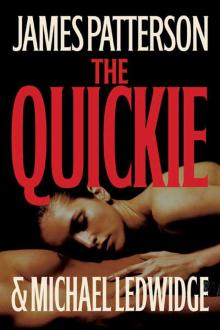 The Quickie
The Quickie Little Black Dress
Little Black Dress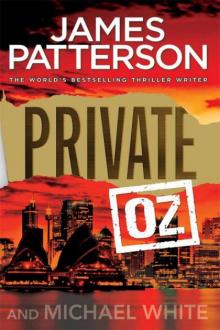 Private Oz
Private Oz Homeroom Diaries
Homeroom Diaries Gone
Gone Lifeguard
Lifeguard Kill Me if You Can
Kill Me if You Can Bullseye
Bullseye Confessions of a Murder Suspect
Confessions of a Murder Suspect Black Friday
Black Friday Manhunt
Manhunt Filthy Rich
Filthy Rich Step on a Crack
Step on a Crack Private
Private Private India
Private India Game Over
Game Over Private Sydney
Private Sydney The Murder House
The Murder House Mistress
Mistress I, Michael Bennett
I, Michael Bennett The Gift
The Gift The Postcard Killers
The Postcard Killers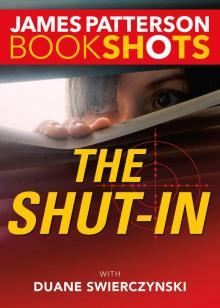 The Shut-In
The Shut-In The House Husband
The House Husband The Lost
The Lost I, Alex Cross
I, Alex Cross Going Bush
Going Bush 16th Seduction
16th Seduction The Jester
The Jester Along Came a Spider
Along Came a Spider The Lake House
The Lake House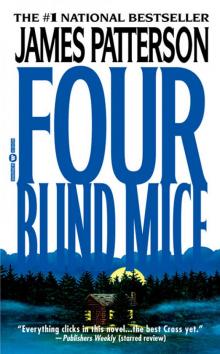 Four Blind Mice
Four Blind Mice Tick Tock
Tick Tock Private L.A.
Private L.A. Middle School, the Worst Years of My Life
Middle School, the Worst Years of My Life Cross Country
Cross Country The Final Warning
The Final Warning Word of Mouse
Word of Mouse Come and Get Us
Come and Get Us Sail
Sail I Funny TV: A Middle School Story
I Funny TV: A Middle School Story Private London
Private London Save Rafe!
Save Rafe! Swimsuit
Swimsuit Sam's Letters to Jennifer
Sam's Letters to Jennifer 3rd Degree
3rd Degree Double Cross
Double Cross Judge & Jury
Judge & Jury Kiss the Girls
Kiss the Girls Second Honeymoon
Second Honeymoon Guilty Wives
Guilty Wives 1st to Die
1st to Die NYPD Red 4
NYPD Red 4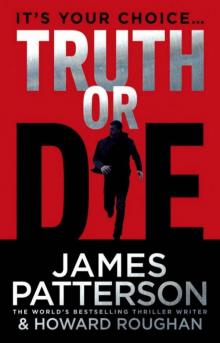 Truth or Die
Truth or Die Private Vegas
Private Vegas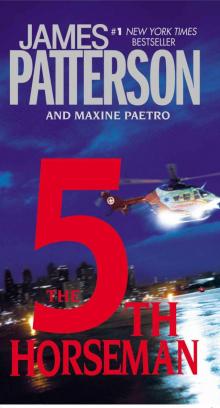 The 5th Horseman
The 5th Horseman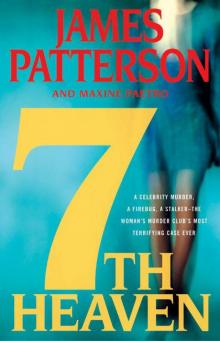 7th Heaven
7th Heaven I Even Funnier
I Even Funnier Cross My Heart
Cross My Heart Let’s Play Make-Believe
Let’s Play Make-Believe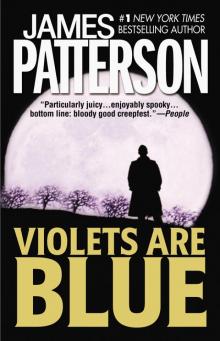 Violets Are Blue
Violets Are Blue Zoo
Zoo Home Sweet Murder
Home Sweet Murder The Private School Murders
The Private School Murders Alex Cross, Run
Alex Cross, Run Hunted: BookShots
Hunted: BookShots The Fire
The Fire Chase
Chase 14th Deadly Sin
14th Deadly Sin Bloody Valentine
Bloody Valentine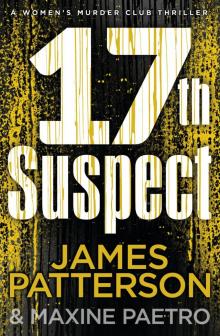 The 17th Suspect
The 17th Suspect The 8th Confession
The 8th Confession 4th of July
4th of July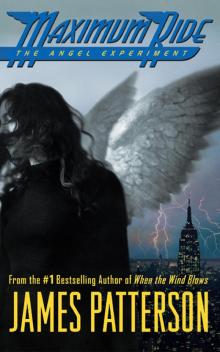 The Angel Experiment
The Angel Experiment Crazy House
Crazy House School's Out - Forever
School's Out - Forever Suzanne's Diary for Nicholas
Suzanne's Diary for Nicholas Cross Justice
Cross Justice Maximum Ride Forever
Maximum Ride Forever The Thomas Berryman Number
The Thomas Berryman Number Honeymoon
Honeymoon The Medical Examiner
The Medical Examiner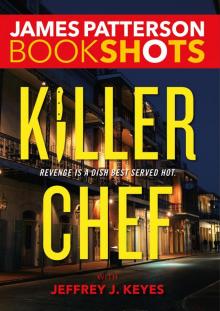 Killer Chef
Killer Chef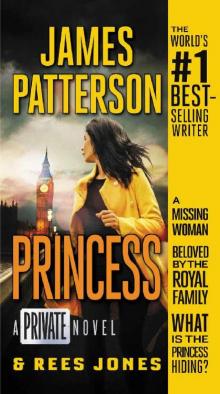 Private Princess
Private Princess Private Games
Private Games Burn
Burn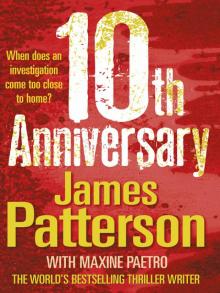 10th Anniversary
10th Anniversary I Totally Funniest: A Middle School Story
I Totally Funniest: A Middle School Story Taking the Titanic
Taking the Titanic The Lawyer Lifeguard
The Lawyer Lifeguard The 6th Target
The 6th Target Cross the Line
Cross the Line Alert
Alert Saving the World and Other Extreme Sports
Saving the World and Other Extreme Sports 1st Case
1st Case Unlucky 13
Unlucky 13 Haunted
Haunted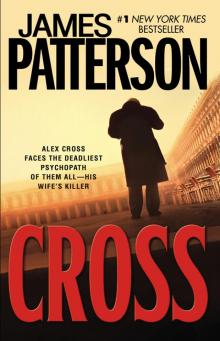 Cross
Cross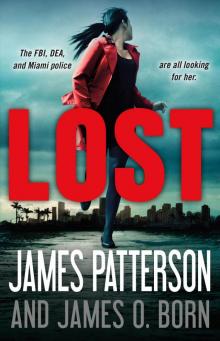 Lost
Lost 11th Hour
11th Hour Bookshots Thriller Omnibus
Bookshots Thriller Omnibus Target: Alex Cross
Target: Alex Cross Hope to Die
Hope to Die The Noise
The Noise Worst Case
Worst Case Dog's Best Friend
Dog's Best Friend Nevermore: The Final Maximum Ride Adventure
Nevermore: The Final Maximum Ride Adventure I Funny: A Middle School Story
I Funny: A Middle School Story NYPD Red
NYPD Red Till Murder Do Us Part
Till Murder Do Us Part Black & Blue
Black & Blue Fang
Fang Liar Liar
Liar Liar The Inn
The Inn Sundays at Tiffany's
Sundays at Tiffany's Middle School: Escape to Australia
Middle School: Escape to Australia Cat and Mouse
Cat and Mouse Instinct
Instinct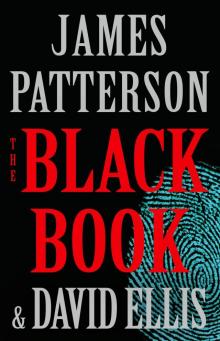 The Black Book
The Black Book London Bridges
London Bridges Toys
Toys The Last Days of John Lennon
The Last Days of John Lennon Roses Are Red
Roses Are Red Witch & Wizard
Witch & Wizard The Dolls
The Dolls The Christmas Wedding
The Christmas Wedding The River Murders
The River Murders The 18th Abduction
The 18th Abduction The 19th Christmas
The 19th Christmas Middle School: How I Got Lost in London
Middle School: How I Got Lost in London Just My Rotten Luck
Just My Rotten Luck Red Alert
Red Alert Walk in My Combat Boots
Walk in My Combat Boots Three Women Disappear
Three Women Disappear 21st Birthday
21st Birthday All-American Adventure
All-American Adventure Becoming Muhammad Ali
Becoming Muhammad Ali The Murder of an Angel
The Murder of an Angel The 13-Minute Murder
The 13-Minute Murder Rebels With a Cause
Rebels With a Cause The Trial
The Trial Run for Your Life
Run for Your Life The House Next Door
The House Next Door NYPD Red 2
NYPD Red 2 Ali Cross
Ali Cross The Big Bad Wolf
The Big Bad Wolf Middle School: My Brother Is a Big, Fat Liar
Middle School: My Brother Is a Big, Fat Liar Private Paris
Private Paris Miracle on the 17th Green
Miracle on the 17th Green The People vs. Alex Cross
The People vs. Alex Cross The Beach House
The Beach House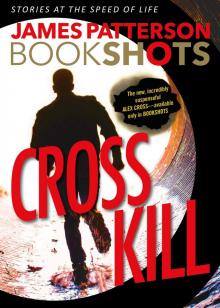 Cross Kill
Cross Kill Dog Diaries
Dog Diaries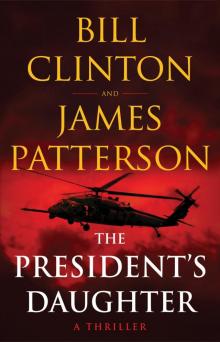 The President's Daughter
The President's Daughter Happy Howlidays
Happy Howlidays Detective Cross
Detective Cross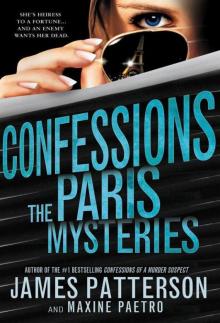 The Paris Mysteries
The Paris Mysteries Watch the Skies
Watch the Skies 113 Minutes
113 Minutes Alex Cross's Trial
Alex Cross's Trial NYPD Red 3
NYPD Red 3 Hush Hush
Hush Hush Now You See Her
Now You See Her Merry Christmas, Alex Cross
Merry Christmas, Alex Cross 2nd Chance
2nd Chance Private Royals
Private Royals Two From the Heart
Two From the Heart Max
Max I, Funny
I, Funny Blindside (Michael Bennett)
Blindside (Michael Bennett) Sophia, Princess Among Beasts
Sophia, Princess Among Beasts Armageddon
Armageddon Don't Blink
Don't Blink NYPD Red 6
NYPD Red 6 The First Lady
The First Lady Texas Outlaw
Texas Outlaw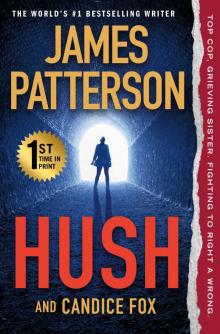 Hush
Hush Beach Road
Beach Road Private Berlin
Private Berlin The Family Lawyer
The Family Lawyer Jack & Jill
Jack & Jill The Midwife Murders
The Midwife Murders Middle School: Rafe's Aussie Adventure
Middle School: Rafe's Aussie Adventure The Murder of King Tut: The Plot to Kill the Child King
The Murder of King Tut: The Plot to Kill the Child King First Love
First Love The Dangerous Days of Daniel X
The Dangerous Days of Daniel X Hawk
Hawk Private Delhi
Private Delhi The 20th Victim
The 20th Victim The Shadow
The Shadow Katt vs. Dogg
Katt vs. Dogg The Palm Beach Murders
The Palm Beach Murders 2 Sisters Detective Agency
2 Sisters Detective Agency Humans, Bow Down
Humans, Bow Down You've Been Warned
You've Been Warned Cradle and All
Cradle and All 20th Victim: (Women’s Murder Club 20) (Women's Murder Club)
20th Victim: (Women’s Murder Club 20) (Women's Murder Club) Season of the Machete
Season of the Machete Woman of God
Woman of God Mary, Mary
Mary, Mary Blindside
Blindside Invisible
Invisible The Chef
The Chef Revenge
Revenge See How They Run
See How They Run Pop Goes the Weasel
Pop Goes the Weasel 15th Affair
15th Affair Middle School: Get Me Out of Here!
Middle School: Get Me Out of Here! Middle School: How I Survived Bullies, Broccoli, and Snake Hill
Middle School: How I Survived Bullies, Broccoli, and Snake Hill From Hero to Zero - Chris Tebbetts
From Hero to Zero - Chris Tebbetts G'day, America
G'day, America Max Einstein Saves the Future
Max Einstein Saves the Future The Cornwalls Are Gone
The Cornwalls Are Gone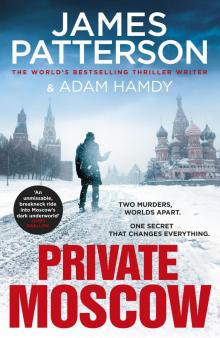 Private Moscow
Private Moscow Two Schools Out - Forever
Two Schools Out - Forever Hollywood 101
Hollywood 101 Deadly Cargo: BookShots
Deadly Cargo: BookShots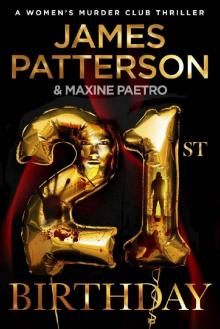 21st Birthday (Women's Murder Club)
21st Birthday (Women's Murder Club) The Sky Is Falling
The Sky Is Falling Cajun Justice
Cajun Justice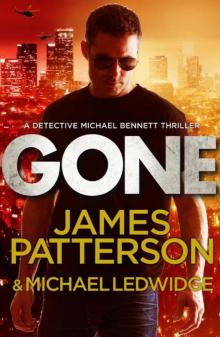 Bennett 06 - Gone
Bennett 06 - Gone The House of Kennedy
The House of Kennedy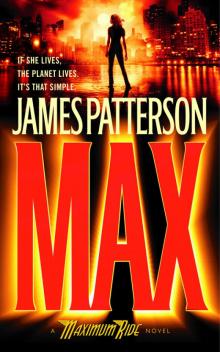 Waterwings
Waterwings Murder is Forever, Volume 2
Murder is Forever, Volume 2 Maximum Ride 02
Maximum Ride 02 Treasure Hunters--The Plunder Down Under
Treasure Hunters--The Plunder Down Under Private Royals: BookShots (A Private Thriller)
Private Royals: BookShots (A Private Thriller) After the End
After the End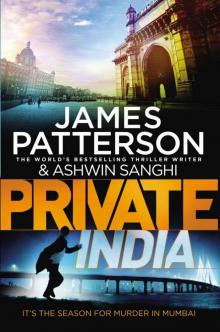 Private India: (Private 8)
Private India: (Private 8)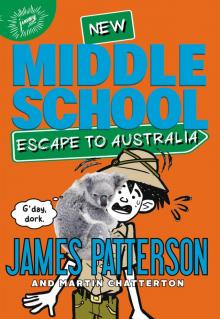 Escape to Australia
Escape to Australia WMC - First to Die
WMC - First to Die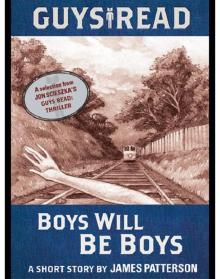 Boys Will Be Boys
Boys Will Be Boys The Red Book
The Red Book 11th hour wmc-11
11th hour wmc-11 Hidden
Hidden You've Been Warned--Again
You've Been Warned--Again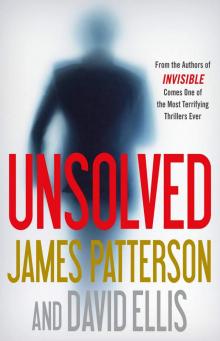 Unsolved
Unsolved Pottymouth and Stoopid
Pottymouth and Stoopid Hope to Die: (Alex Cross 22)
Hope to Die: (Alex Cross 22) The Moores Are Missing
The Moores Are Missing Black & Blue: BookShots (Detective Harriet Blue Series)
Black & Blue: BookShots (Detective Harriet Blue Series) Airport - Code Red: BookShots
Airport - Code Red: BookShots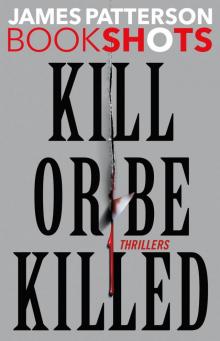 Kill or Be Killed
Kill or Be Killed School's Out--Forever
School's Out--Forever When the Wind Blows
When the Wind Blows Heist: BookShots
Heist: BookShots Murder of Innocence (Murder Is Forever)
Murder of Innocence (Murder Is Forever) Red Alert_An NYPD Red Mystery
Red Alert_An NYPD Red Mystery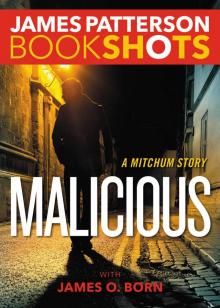 Malicious
Malicious Scott Free
Scott Free The Summer House
The Summer House French Kiss
French Kiss Treasure Hunters
Treasure Hunters Murder Is Forever, Volume 1
Murder Is Forever, Volume 1 Secret of the Forbidden City
Secret of the Forbidden City Cross the Line: (Alex Cross 24)
Cross the Line: (Alex Cross 24) Witch & Wizard: The Fire
Witch & Wizard: The Fire![Women's Murder Club [06] The 6th Target Read online](http://i1.bookreadfree.com/i/03/24/womens_murder_club_06_the_6th_target_preview.jpg) Women's Murder Club [06] The 6th Target
Women's Murder Club [06] The 6th Target Cross My Heart ac-21
Cross My Heart ac-21 Alex Cross’s Trial ак-15
Alex Cross’s Trial ак-15 Alex Cross 03 - Jack & Jill
Alex Cross 03 - Jack & Jill Liar Liar: (Harriet Blue 3) (Detective Harriet Blue Series)
Liar Liar: (Harriet Blue 3) (Detective Harriet Blue Series) Cross Country ак-14
Cross Country ак-14 Honeymoon h-1
Honeymoon h-1 Maximum Ride: The Angel Experiment
Maximum Ride: The Angel Experiment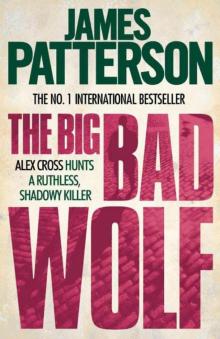 The Big Bad Wolf ак-9
The Big Bad Wolf ак-9 Dead Heat: BookShots (Book Shots)
Dead Heat: BookShots (Book Shots)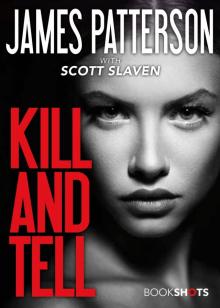 Kill and Tell
Kill and Tell Avalanche
Avalanche Robot Revolution
Robot Revolution Public School Superhero
Public School Superhero 12th of Never
12th of Never Max: A Maximum Ride Novel
Max: A Maximum Ride Novel All-American Murder
All-American Murder Murder Games
Murder Games Robots Go Wild!
Robots Go Wild! My Life Is a Joke
My Life Is a Joke Private: Gold
Private: Gold Demons and Druids
Demons and Druids Jacky Ha-Ha
Jacky Ha-Ha Postcard killers
Postcard killers Princess: A Private Novel
Princess: A Private Novel Kill Alex Cross ac-18
Kill Alex Cross ac-18 12th of Never wmc-12
12th of Never wmc-12 The Murder of King Tut
The Murder of King Tut I Totally Funniest
I Totally Funniest Cross Fire ак-17
Cross Fire ак-17 Count to Ten
Count to Ten![Women's Murder Club [10] 10th Anniversary Read online](http://i1.bookreadfree.com/i1/03/30/womens_murder_club_10_10th_anniversary_preview.jpg) Women's Murder Club [10] 10th Anniversary
Women's Murder Club [10] 10th Anniversary![Women's Murder Club [01] 1st to Die Read online](http://i1.bookreadfree.com/i1/03/31/womens_murder_club_01_1st_to_die_preview.jpg) Women's Murder Club [01] 1st to Die
Women's Murder Club [01] 1st to Die I, Michael Bennett mb-5
I, Michael Bennett mb-5 Nooners
Nooners![Women's Murder Club [08] The 8th Confession Read online](http://i1.bookreadfree.com/i1/04/03/womens_murder_club_08_the_8th_confession_preview.jpg) Women's Murder Club [08] The 8th Confession
Women's Murder Club [08] The 8th Confession Private jm-1
Private jm-1 Treasure Hunters: Danger Down the Nile
Treasure Hunters: Danger Down the Nile Worst Case mb-3
Worst Case mb-3 Don’t Blink
Don’t Blink The Games
The Games The Medical Examiner: A Women's Murder Club Story
The Medical Examiner: A Women's Murder Club Story Black Market
Black Market Gone mb-6
Gone mb-6![Women's Murder Club [02] 2nd Chance Read online](http://i1.bookreadfree.com/i1/04/04/womens_murder_club_02_2nd_chance_preview.jpg) Women's Murder Club [02] 2nd Chance
Women's Murder Club [02] 2nd Chance French Twist
French Twist Kenny Wright
Kenny Wright Manhunt: A Michael Bennett Story
Manhunt: A Michael Bennett Story Cross Kill: An Alex Cross Story
Cross Kill: An Alex Cross Story Confessions of a Murder Suspect td-1
Confessions of a Murder Suspect td-1 Second Honeymoon h-2
Second Honeymoon h-2 Chase_A BookShot_A Michael Bennett Story
Chase_A BookShot_A Michael Bennett Story Confessions: The Paris Mysteries
Confessions: The Paris Mysteries![Women's Murder Club [09] The 9th Judgment Read online](http://i1.bookreadfree.com/i2/04/08/womens_murder_club_09_the_9th_judgment_preview.jpg) Women's Murder Club [09] The 9th Judgment
Women's Murder Club [09] The 9th Judgment Absolute Zero
Absolute Zero Nevermore: The Final Maximum Ride Adventure mr-8
Nevermore: The Final Maximum Ride Adventure mr-8 Angel: A Maximum Ride Novel mr-7
Angel: A Maximum Ride Novel mr-7 Juror #3
Juror #3 Million-Dollar Mess Down Under
Million-Dollar Mess Down Under The Verdict: BookShots (A Jon Roscoe Thriller)
The Verdict: BookShots (A Jon Roscoe Thriller)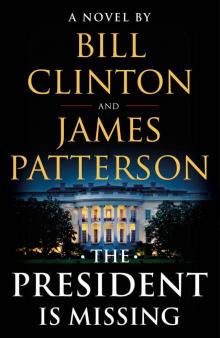 The President Is Missing: A Novel
The President Is Missing: A Novel![Women's Murder Club [04] 4th of July Read online](http://i1.bookreadfree.com/i2/04/06/womens_murder_club_04_4th_of_july_preview.jpg) Women's Murder Club [04] 4th of July
Women's Murder Club [04] 4th of July The Hostage: BookShots (Hotel Series)
The Hostage: BookShots (Hotel Series) $10,000,000 Marriage Proposal
$10,000,000 Marriage Proposal Diary of a Succubus
Diary of a Succubus Unbelievably Boring Bart
Unbelievably Boring Bart Angel: A Maximum Ride Novel
Angel: A Maximum Ride Novel Stingrays
Stingrays Confessions: The Private School Murders
Confessions: The Private School Murders Stealing Gulfstreams
Stealing Gulfstreams![Women's Murder Club [05] The 5th Horseman Read online](http://i1.bookreadfree.com/i2/04/05/womens_murder_club_05_the_5th_horseman_preview.jpg) Women's Murder Club [05] The 5th Horseman
Women's Murder Club [05] The 5th Horseman Zoo 2
Zoo 2 Jack Morgan 02 - Private London
Jack Morgan 02 - Private London Treasure Hunters--Quest for the City of Gold
Treasure Hunters--Quest for the City of Gold The Christmas Mystery
The Christmas Mystery Murder in Paradise
Murder in Paradise Kidnapped: BookShots (A Jon Roscoe Thriller)
Kidnapped: BookShots (A Jon Roscoe Thriller)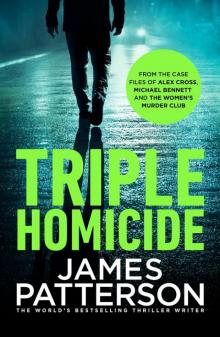 Triple Homicide_Thrillers
Triple Homicide_Thrillers 16th Seduction: (Women’s Murder Club 16) (Women's Murder Club)
16th Seduction: (Women’s Murder Club 16) (Women's Murder Club)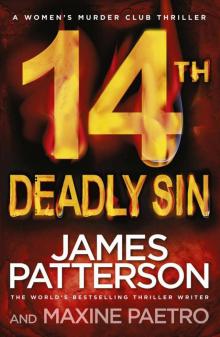 14th Deadly Sin: (Women’s Murder Club 14)
14th Deadly Sin: (Women’s Murder Club 14) Texas Ranger
Texas Ranger Witch & Wizard 04 - The Kiss
Witch & Wizard 04 - The Kiss![Women's Murder Club [03] 3rd Degree Read online](http://i1.bookreadfree.com/i2/04/12/womens_murder_club_03_3rd_degree_preview.jpg) Women's Murder Club [03] 3rd Degree
Women's Murder Club [03] 3rd Degree Break Point: BookShots
Break Point: BookShots Alex Cross 04 - Cat & Mouse
Alex Cross 04 - Cat & Mouse Maximum Ride
Maximum Ride Fifty Fifty: (Harriet Blue 2) (Detective Harriet Blue Series)
Fifty Fifty: (Harriet Blue 2) (Detective Harriet Blue Series) Alex Cross 02 - Kiss the Girls
Alex Cross 02 - Kiss the Girls The President Is Missing
The President Is Missing Hunted
Hunted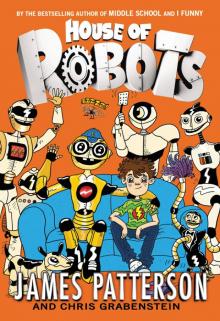 House of Robots
House of Robots Dangerous Days of Daniel X
Dangerous Days of Daniel X Tick Tock mb-4
Tick Tock mb-4 10th Anniversary wmc-10
10th Anniversary wmc-10 The Exile
The Exile Private Games-Jack Morgan 4 jm-4
Private Games-Jack Morgan 4 jm-4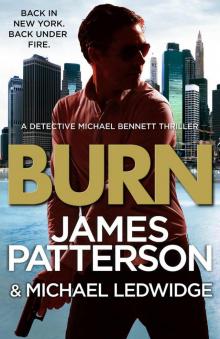 Burn: (Michael Bennett 7)
Burn: (Michael Bennett 7) Laugh Out Loud
Laugh Out Loud The People vs. Alex Cross: (Alex Cross 25)
The People vs. Alex Cross: (Alex Cross 25)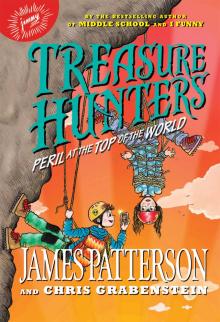 Peril at the Top of the World
Peril at the Top of the World I Funny TV
I Funny TV Merry Christmas, Alex Cross ac-19
Merry Christmas, Alex Cross ac-19 #1 Suspect jm-3
#1 Suspect jm-3 Fang: A Maximum Ride Novel
Fang: A Maximum Ride Novel![Women's Murder Club [07] 7th Heaven Read online](http://i1.bookreadfree.com/i2/04/13/womens_murder_club_07_7th_heaven_preview.jpg) Women's Murder Club [07] 7th Heaven
Women's Murder Club [07] 7th Heaven The End
The End